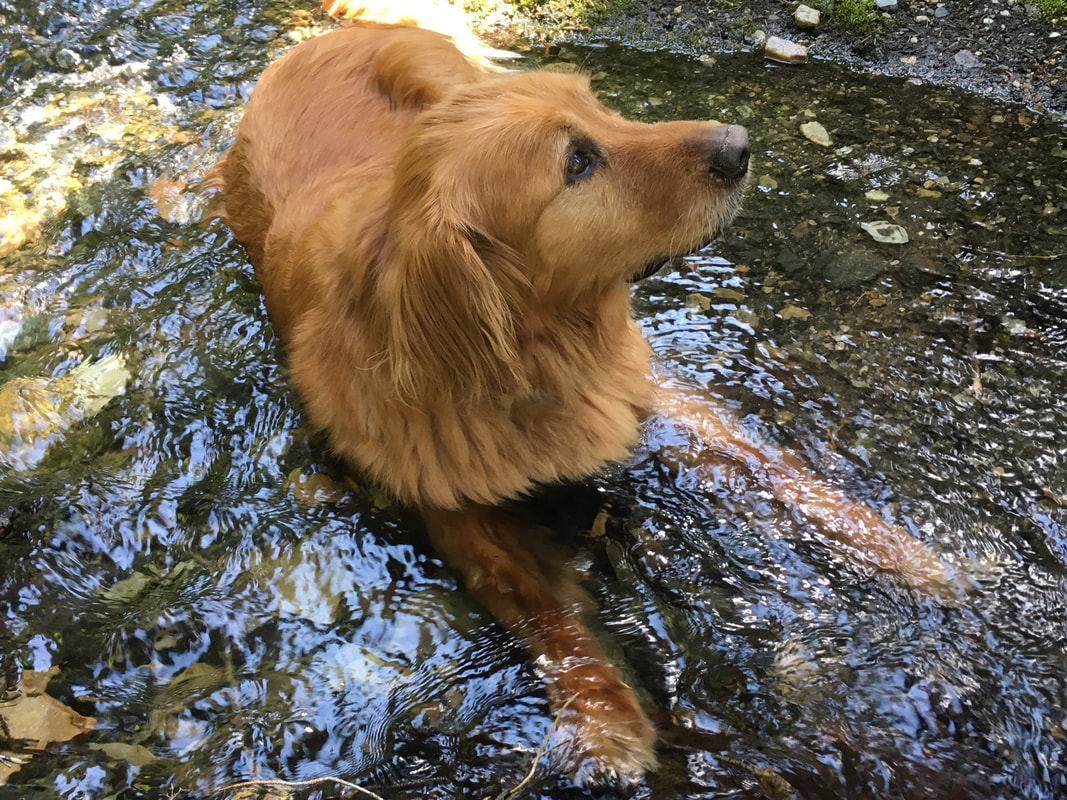 Photo courtesy of UT DEQ
Photo courtesy of UT DEQ The long anticipated warm rays of summer bring with them the bloom of bright yellow, deep purple, and sky-blue wildflowers, dotting the sides of our alpine grasslands, adding much needed color to this beautiful landscape we call home. However, not all of the blooms are benign and worth celebrating.
Lurking beneath the surface of shallow, warm, fresh water lakes and ponds is an organism that, when ignored, has the potential to make our four-legged companions very sick, and is even occasionally fatal.
What is “Blue-green” Algae?
Cyanobacteria are a collection of microorganisms that are often referred to as “blue-green algae”, because of characteristics and appearance that resemble plant matter, namely their ability to undergo photosynthesis, which gives them their green color. Rather than true algae, cyanobacteria are actually a group of gram-negative bacteria. In colder months and in the presence of moving, mineral poor water cyanobacteria are generally in low numbers and are not visible to the naked eye. However, in the warmer months of the year when shallow bodies of water become stagnant and relatively nutrient-rich due to low influx of new water in the form of rain, cyanobacteria will overgrow and produce striking blooms that are often observed near shorelines and can even stretch across the entire surface of a pond. These blooms range in color from deep, mossy green to a cyanotic blue-green.
In this evolving world, organisms of all shapes and sizes do everything in their power to give them a leg-up on their competition. One of my favorite examples is something many of us exploit every single day. Plants produce caffeine to harm the central nervous systems of insects that would love to eat them, the by-product of which is our delicious cappuccino. Cyanobacteria, on the other hand, produce and release a variety of species-specific toxins that limit growth of other microorganisms and plant matter to allow for their large blooms. In small amounts, these toxins are almost negligible to larger animals. However, in the event of a “blue-green algae” bloom, these toxins can accumulate in large enough amounts to cause serious illness in dogs, cats, and even people. The most common toxins affect the liver, the skin, and the central nervous system.
What do I look for?
The first and most common clinical signs associated with cyanobacteria toxicosis include vomiting, diarrhea, weakness, pale gums, and collapse. Additional signs include jaundice, depression, hemorrhage, respiratory distress, seizures, imbalance, and changes in urine frequency. Clinical signs can progress and become life-threatening within HOURS of exposure. One of the most important pieces of this puzzle is your pet’s history. A dog that has been watching a nature documentary on your couch all day likely doesn’t have cyanobacteria toxicosis. However, if you just returned from a hike to a lake or pond in the summer with your water-loving dog and they begin to show these signs (even if you didn’t see an obvious blue-green bloom), I would start to worry there may have been exposure and visit your vet as soon as humanly possible.
Treatment and Outcome
Pets with cyanobacteria toxicosis can become very sick and even pass away before an owner realizes they need to go to the vet. Because of that, AVOIDANCE IS KEY! If you are out this summer with your furry friend, rivers and deep, cold alpine lakes are usually safe, but PLEASE do not let them swim in shallow, warm, stagnant bodies of water, even if they look clean. If you are worried that there has been exposure, please treat it like an emergency and bring your pet in to be seen. Treatment consists of making your animal vomit, administering activated charcoal to bind toxins, controlling neurologic signs and seizures with medications, IV fluid therapy, and treating a variety of other clinical signs. There is no specific cure for cyanobacteria, but rather a combination of therapies that constitute supportive care. Many animals exposed to cyanobacteria recover just fine, but there are certainly some that do not. AVOIDANCE IS KEY!
As we enter into another beautiful summer in the Rocky Mountains, try to enjoy nature to the fullest. Identify the songbirds, explore the forests for virgin waterfalls, and chase the sun as it passes from the east to the western horizon, lighting up the sky in shades of purple and orange. When looking for blooms, however, remember to stick to the flowers; “blue-green algae” is a bloom worth avoiding.



















 RSS Feed
RSS Feed



